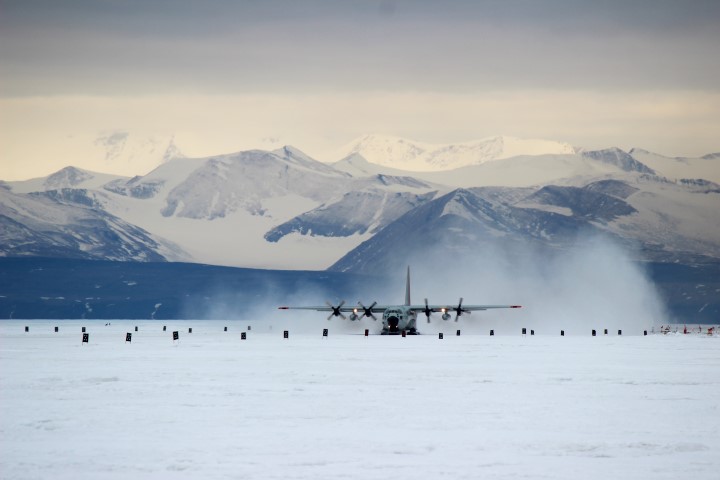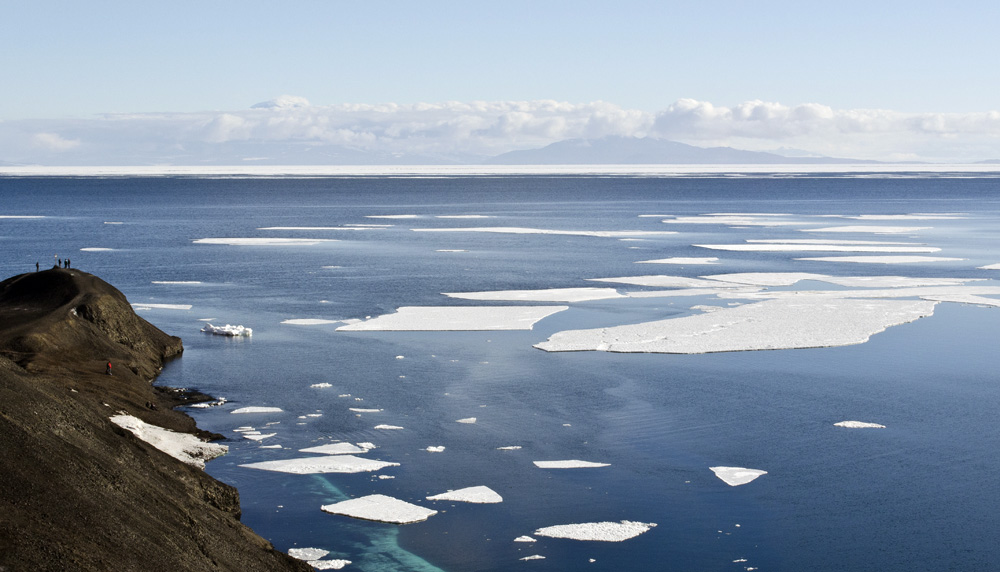|
Page 3/3 - Posted February 21, 2014
Off the iceDunbar said that Williams Air Field – a compacted snow runway on the McMurdo Ice Shelf off the snow road to Pegasus Airfield used by ski-equipped aircraft – has been relocated several times since the 1960s as the ice shelf moved north and calved in years past. “The one thing in the favor for the stability of Willy Field is the fact that the ice shelf is strongly compressive against the point of land over by Scott Base,” MacAyeal noted. As of mid-February, the ice shelf edge was less than two miles from the fuel hose and the compacted snow road that runs alongside of it. The Fuels Department cleared the hose through a process called pigging – a foam rubber bullet is shot through the line to push the fuel out – and began the two-week operation to retrieve the hose earlier than planned, as a precautionary measure. That means aviation fuel for the remainder of the season will be shuttled inside of double-walled tanks originally used to carry fuel to South Pole Station 
Photo Credit: Jack Green/Antarctic Photo Library
An LC-130 prepares to take off from Pegasus Airfield skiway in January 2014. The New York Air National Guard, which operates the ski-equipped aircraft, were called upon to fly more missions due to melt issues at the airfield's white ice runway..
The New York Air National Guard Wheeled military aircraft from New Zealand will likely land sometime in early March after the ice runway at Pegasus Airfield has been repaired and recertified for operations, according to Dunbar. “We are seeing colder temperatures,” he said, which is helping to refreeze the melt pools. The lower temperatures have also helped stabilize the transition road between Ross Island and the ice shelf. The airfield repairs are labor-intensive. They involve using weighted carts to simulate the heft of an aircraft on the runway. The process is gradual, with more and more weight added to the carts; the wheels will bust through voids in the ice created by air pockets as the water refroze. “They’ll find the voids and then patch the voids. They’ll then increase the weight, find more voids, fix those, and we’ll keep going until we get to the weight that simulates a fully loaded aircraft,” Dunbar explained. Some of the high-priority retrograde cargo, such as those ice cores and other science samples, left behind by the early departure of the Maersk Illinois may go north on the remaining flights. Other cargo will wait until the U.S. Air Force Even station utilities have been affected by the perfect storm of events. The jetty where McMurdo’s seawater intake is located has been damaged by wave action. Work has been under way to shore up the jetty using rip-rap, large rocks, found on station and put in place using a crane. “Fleet Ops work on the jetty in late January is likely what saved us from a catastrophic loss during the 6 Feb. storm event,” Knuth explained. Noted MacAyeal about this year’s challenging conditions in McMurdo Sound: “Probably things will not be as bad … as people might fear, but still, a worthy event to teach us that what we expect over a 10-year timescale is unlikely to be a ‘normal’ for the longer period of time. “Also, one can ask: What will be the mid-to-late century impacts of climate change on the precious little bits of ice in McMurdo that we rely on to access the entire continent?” |



For USAP Participants |
For The Public |
For Researchers and EducatorsContact UsU.S. National Science FoundationOffice of Polar Programs Geosciences Directorate 2415 Eisenhower Avenue, Suite W7100 Alexandria, VA 22314 Sign up for the NSF Office of Polar Programs newsletter and events. Feedback Form |


